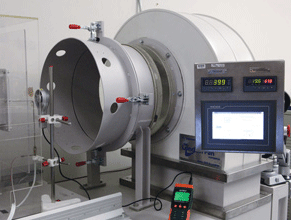Anemometers measure wind speeds or air movement. These “spinning” instruments are a common site in environmental monitoring; you will see them from the Arctic to weather stations in the tropics. Beyond every day weather measurements, they are used commercially for gas-flow applications and within air ducts to test ventilation. Anemometers also contribute to industry and technology. Laser anemometers help engineers determine the wind speed surrounding aircraft, automobiles, and other vehicles. In academia, anemometers teach students about physics.
Manometers measure fluid pressure and, along with a pitot tube, test HVAC air flow to analyze balance and performance. Another form of manometer, the micromanometer, measures very small differences in pressure and may or may not include a data logger.
To meet the demands of a variety of uses, these air velocity instruments need regular calibration. Like other instruments in this category, including weather stations and capture hoods, NIST-traceable calibration helps them deliver accurate readings that produce reliable data. A metrology laboratory with an air velocity lab that uses advanced wind tunnel technology will help these instruments provide some of the industry’s best measurements.
InnoCal’s ISO17025 accredited services are audited by A2LA for high technical competency in vane and hot-wire anemometer and manometer calibrations. The lab also calibrates the humidity, barometric pressure, and carbon dioxide functions of air velocity devices. Find out more.